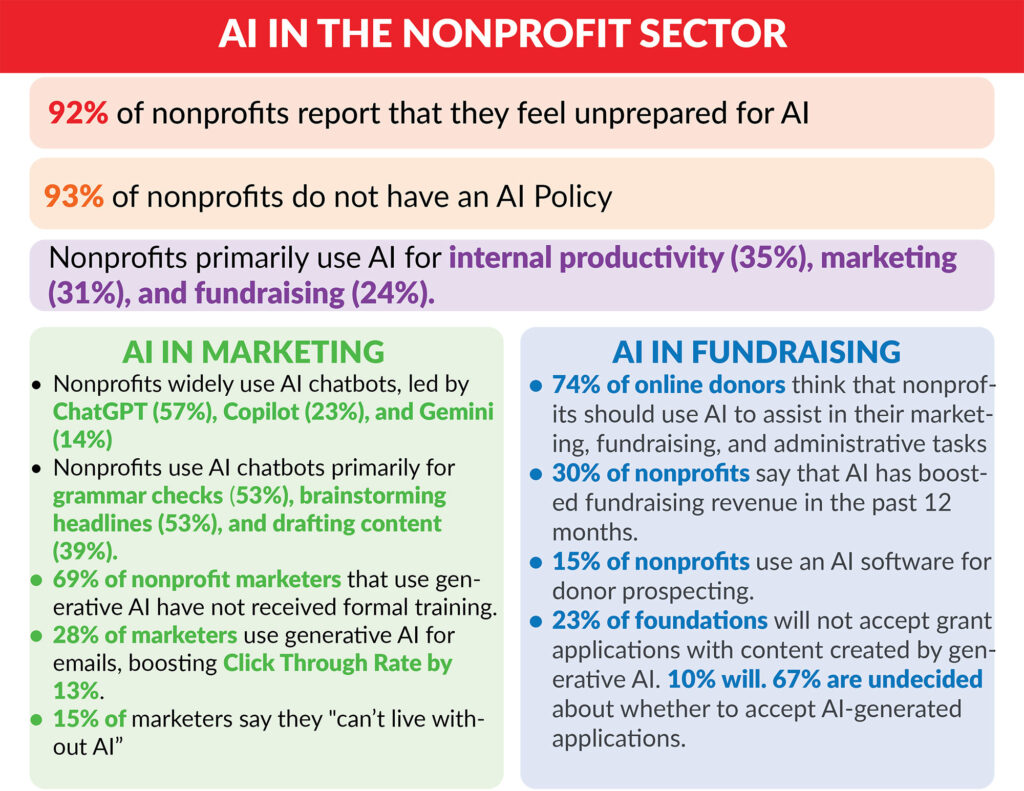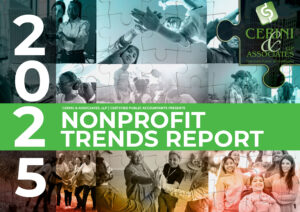As we move into 2025, nonprofit organizations must stay ahead of IT and cybersecurity trends to protect their data, streamline operations, and enhance their impact. Here are key trends to watch:
1.) Increased Adoption of Cloud Computing
Cloud computing continues to be a game-changer for nonprofits. By moving to the cloud, organizations can reduce costs, improve data accessibility, and enhance collaboration. Cloud-based solutions offer scalability, allowing nonprofits to adjust their resources based on demand. This flexibility is crucial for managing donor databases, financial records, and program data efficiently.
2.) Enhanced Cybersecurity Measures
Cybersecurity remains a top priority as cyber threats become more sophisticated. Nonprofits are increasingly targeted by cybercriminals due to their often limited security resources. In 2025, nonprofits must invest in robust cybersecurity measures, including:
- Multi-Factor Authentication (MFA): Adding an extra layer of security to protect sensitive information.
- Regular Security Audits: Conducting frequent audits to identify and address vulnerabilities.
- Employee Training: Educating staff on best practices for cybersecurity to prevent phishing attacks and other threats.
- Data Encryption: Ensuring that all sensitive data is encrypted both in transit and at rest.
Third-Party Risk Management Needs Will Drive Changes to Compliance Programs: According to Tech Republic, third-party risk management, supply chain risk management, and increased oversight and regulatory requirements will drive the need for companies to focus on and mature their governance, risk, and compliance programs. Organizations will likely shift toward proactive ways of assessing and monitoring supply chains, leveraging zero-trust architectures to verify at stages of access.
3.) Artificial Intelligence and Automation
AI and automation are transforming nonprofit operations. AI tools can analyze large datasets to provide insights into donor behavior, predict fundraising outcomes, and personalize communication. Automation can streamline repetitive tasks, such as data entry and donor follow-ups, freeing up staff to focus on strategic initiatives. AI-powered chatbots can also enhance donor engagement by providing instant responses to inquiries.
4.) Data Privacy and Compliance
With increasing data privacy regulations, nonprofits must ensure compliance to protect donor information and maintain trust. Implementing data protection measures and staying updated on regulations like General Data Protection Regulation (GDPR) and California Consumer Privacy Act (CCPA) is essential. Nonprofits should also develop clear data privacy policies and communicate them to donors and stakeholders.
Cybersecurity and Data Responsibility: The adoption of CCPA and GDPR in recent years has put increased attention on data responsibility practices. Only 39% of Gen Z say they trust organizations to keep their data safe, the lowest rate of any generation. Knowing this trend will only continue, now is the time to shore up your data governance policies. Consider implementing practices like single sign-on (SSO) and email list hygiene, as well as other responsible data habits. It’s also extremely important to have a dedicated page or blog on your website that explains your data governance or cookie policy.
5.) Integration of Digital Payment Solutions
Digital payment solutions are becoming more prevalent, making it easier for donors to contribute. Nonprofits should integrate various digital payment options, including mobile wallets, online payment gateways, and cryptocurrency donations. This not only enhances the donor experience but also increases the likelihood of receiving donations.
6.) Remote Work and Collaboration Tools
The shift to remote work has accelerated the adoption of collaboration tools. Nonprofits are leveraging platforms like Microsoft Teams, Slack, and Zoom to facilitate communication and project management. These tools enable teams to work efficiently from anywhere, ensuring continuity of operations and engagement with stakeholders.
7.) Cyber Insurance
As cyber threats grow, more nonprofits are investing in cyber insurance to mitigate the financial impact of data breaches and cyberattacks. Cyber insurance can cover costs related to data recovery, legal fees, and notification expenses. It provides a safety net, allowing nonprofits to recover more quickly from cyber incidents.
8.) Blockchain Technology
Blockchain technology is gaining traction in the nonprofit sector for its potential to enhance transparency and trust. By using blockchain, nonprofits can create immutable records of donations, ensuring that funds are used as intended. This technology can also streamline grant management and reduce administrative costs.
9.) IT Infrastructure Modernization
Modernizing IT infrastructure is crucial for nonprofits to stay competitive and efficient. This includes upgrading hardware, adopting new software solutions, and ensuring that IT systems are scalable and secure. Investing in modern IT infrastructure can improve overall organizational performance and support long-term growth.
10.) Focus on Digital Inclusion
Digital inclusion initiatives aim to bridge the digital divide by providing access to technology and digital literacy training. Nonprofits are increasingly focusing on digital inclusion to ensure that underserved communities can benefit from their programs and services. This includes providing devices, internet access, and training to enhance digital skills.
11.) Macs Will Be Increasingly Targeted by Cybercriminals
Experts predict that Macs will become even more of a target for cybercriminals in 2025. Rising threats, particularly from stealer malware designed to collect sensitive data, are expected to increase. Nonprofits using macOS should be vigilant and implement robust security measures to protect their systems.
12.) Security Teams Will Take Over Identity and Access Management
In 2025, responsibility for identity and access management within companies is expected to shift from IT departments to security teams. As identity-based attacks escalate, security professionals will be needed to eliminate potential entry points and enhance overall security.
13.) Employees Will Be Targeted with AI Scam Tools
AI-enhanced malicious attacks are predicted to continue into 2025. These attacks, including business email compromise and voice impersonation scams, will target employees, especially those in finance, HR, and IT roles. Nonprofits must educate their staff on recognizing and responding to such threats.
By staying informed about these IT and cybersecurity trends, nonprofits can protect their data, improve operational efficiency, and enhance their impact in 2025 and beyond.

Albert Borghese, CPA
Partner
Albert is a member of Cerini & Associates’ audit and consulting practice where he focuses on serving the firm’s special education and nonprofit clients. Albert is also involved in the marketing and development of the firm, and frequently participates in recruiting efforts, and research.





No comment yet, add your voice below!